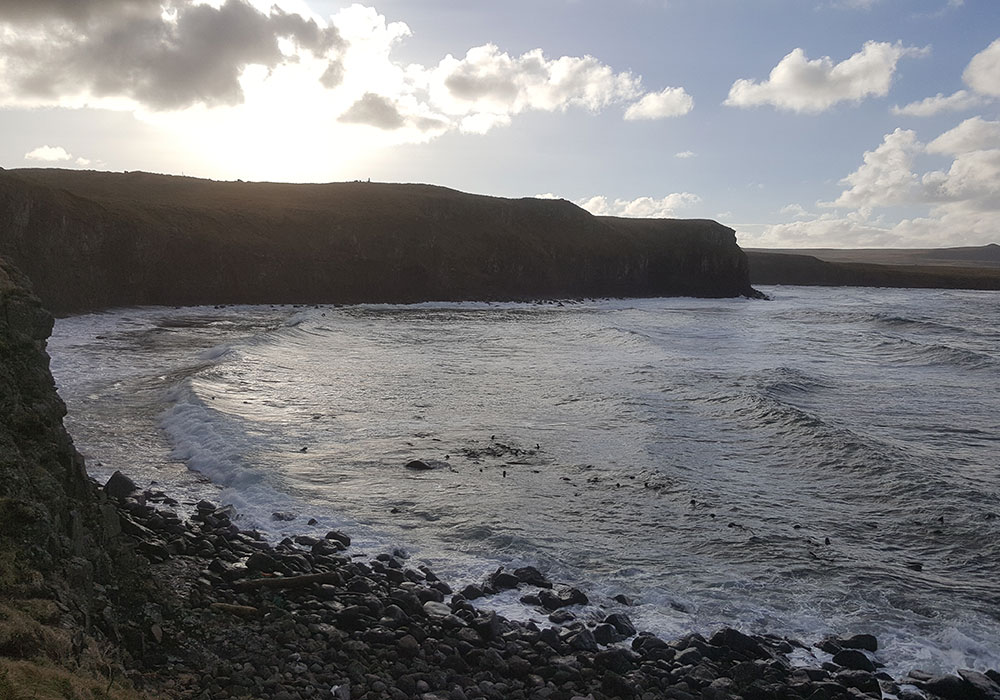The Power of Planning in a Remote and Rural Context

Located in the Bering Sea on the coast of Alaska, St. George Island is home to approximately 60 native Unangan residents. As with many remote communities, St. George has an economic history closely tied to injustice and single-sector reliance. Still, resilience is one of the community's strengths. The 2020 St. George Economic Development Strategy proves this.
St. George's Resilient Economic Rebuilding
In 1786, Russian hunters enslaved Unangan hunters from Atka, Unalaska, and Siberia and brought them to St. George to harvest fur seals. In 1867, the U.S. purchased Alaska and began formally occupying St. George. Federal and state bodies exercised control over residents and the fur seal trade well into the mid-1900s. Unangan people received minimal services and were paid only via store credits, goods, and services.
Declining revenue from fur seals into the 1960s encouraged the U.S. to cut costs, including withdrawing from the area in 1983 with the end of the fur seal trade. Left with no economic base, St. George began working towards a fisheries economy.
With a lack of key infrastructure, risks such as stock depletion, and restrictive federal policies, the shift has proved difficult. St. George is now facing a declining population, critical infrastructure and energy needs, closure of basic services, and high unemployment.
Despite this, St. George is championing innovation with their new, award-winning economic development strategy Rebuilding our Future Kayutuuxtxin Tanagnangin Igayuusalix angagiimchin agnaxtxichin, a values-driven, evidence-based, community-led economic development plan supported by EcoPlan International.
Rebuilding our Future Kayutuuxtxin Tanagnangin Igayuusalix angagiimchin agnaxtxichin (meaning "Be strong; live with and respect the land, sea, and all nature" in Unangam Tunuu) builds on local traditional knowledge and practices and celebrates the cultural, spiritual, and emotional strength of St. George's people.
Inclusive Community Engagement Shapes Strategy
To ground the strategy in community values, St. George used extensive "listening engagement" supported by strategic partnerships. The strategy began with informal meetings with community members and in-person gatherings of community leaders. To ensure every resident had the opportunity to be involved in ways that met their individual needs, planners met with community members wherever they felt comfortable — on the land, at work, and in their homes.
After setting the project's direction, the strategy continued to engage residents through multiple community surveys, a newsletter, 11 plain language papers to update residents, and a public website.
To reach remote island residents with unreliable internet, St. George hired a resident to take surveys door-to-door and deliver them orally. This created culturally appropriate opportunities for residents to engage with a familiar face and built local capacity.
An overwhelming success, the process engaged 80 percent of St. George's residents, and community voices were incorporated into the strategy and all 11 working papers.
Outside of resident engagement, St. George engaged with 23 organizations, knowledge-holders, and industry experts both on– and off–island through dozens of phone calls and interviews. Combined with rigorous economic analysis, the result is proposed solutions for a resilient economy that are grounded in Unangan values, build on pre-existing connections to the land, and uplift local assets and knowledge.

Meeting with tribe and city leaders and Will Trousdale, lead project planner.
Diverse Economic Strategy for Resilience
After months of extensive research, analysis, and on-the-ground community engagement, the strategy outlines several economic opportunities across seven sectors. These opportunities could create 20 jobs in the short term and 200 in the long term.
However, the strategy looks beyond traditional "economic development," adopting a holistic approach that considers all facets of community life. On top of diversifying the economy, generating revenue, and creating jobs, the strategy addresses housing needs, environmental research and sustainability, and access to community and social services such as the Internet.
Proposed economic opportunities support culturally driven social, environmental, and economic resilience with notable projects including upgrading the harbor, nominating a National Marine Sanctuary, and managing a reindeer herd.
Many of the proposed opportunities have added benefits beyond St. George's population: harbor upgrades will improve transportation throughout the Bering Sea, and the National Marine Sanctuary will help conserve globally significant wildlife populations.

Nominating a National Marine Sanctuary could support a "conservation economy," creating research and tourism opportunities and protecting important species without impacting hunting and fishing.

One of the administrator's first undertakings has been repairing the wind turbine which will reduce energy costs by an estimated $250,000-$300,000 annually and build energy resilience.
St. George's Strategy Yields Results
Less than a year after adopting the strategy, St. George has already begun working on three of the strategy's four priorities. In 2020, the city hired an assistant city administrator to coordinate strategy implementation, contacted a professional grant writer, and was approved for $164 million for harbor development.
St. George's Economic Development Strategy provides culturally grounded and achievable pathways to a diverse and resilient economy while still addressing social and environmental needs within the community and the broader region. With three of the four priority areas already underway, this strategy proves that community-led, culturally sensitive planning and strategy development is not only possible in small communities but incredibly impactful.
Developing the strategy started conversations on economic resilience and self-determination within St. George. As the strategy is implemented and infrastructure improves, residents will become further involved in building their economic resilience.
For more information, contact George Pletnikoff at george@unangan.org, or visit https://www.stgeorgealaska.org
Top Image: Located in the Bering Sea on the coast of Alaska, St. George Island is home to approximately 60 native Unangan residents.


